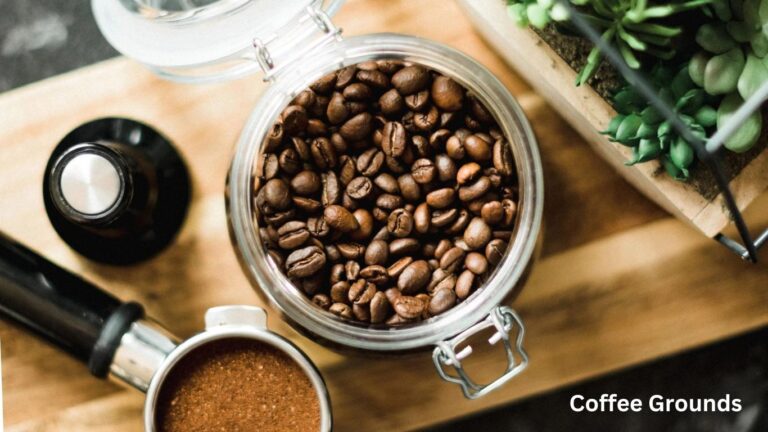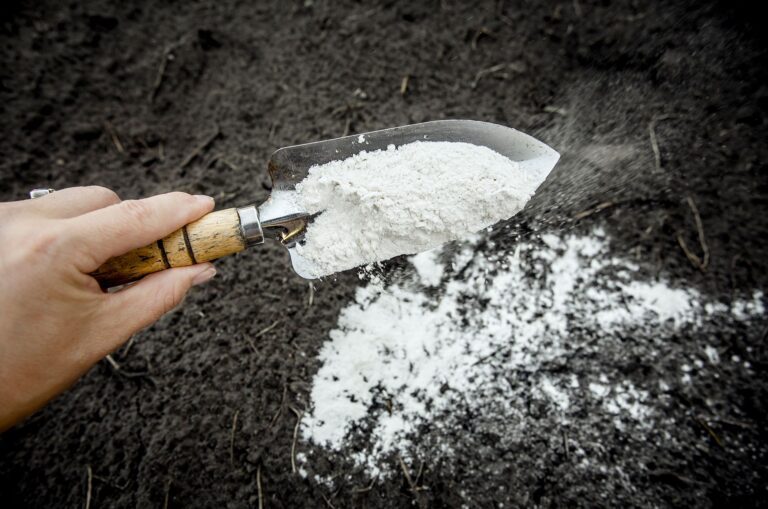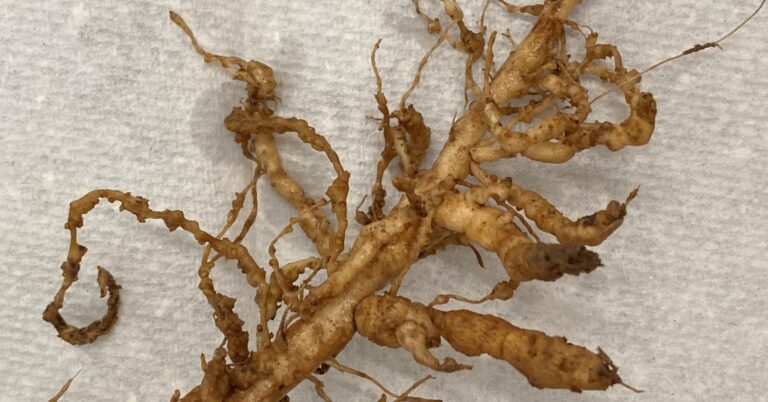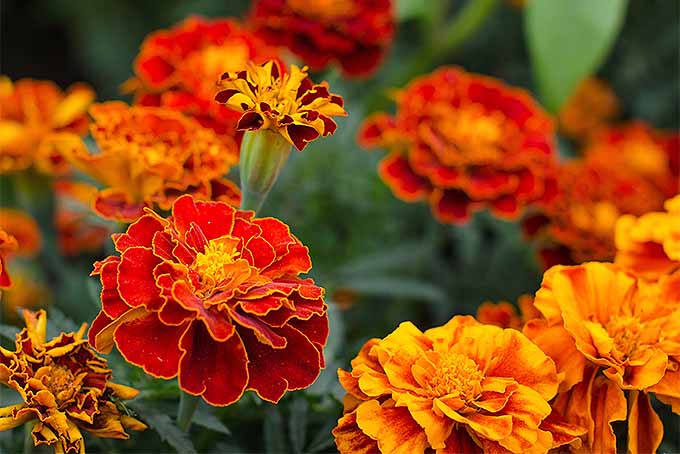Hemp Cultivation Supplies: Hemp Farm: A Guide to Setting Up and Running a Successful Hemp Farm
Table of Contents
Understanding the Hemp Industry: An Overview of the Growing Demand for Hemp Products
The demand for hemp products has been steadily increasing in recent years, driven by a variety of factors. One of the key drivers is the growing awareness and acceptance of the potential health benefits of hemp-derived products, particularly CBD. CBD, or cannabidiol, is a non-intoxicating compound found in hemp plants that has been widely studied for its potential therapeutic properties. It is believed to have anti-inflammatory, analgesic, and anxiolytic effects, among others. As a result, CBD products such as oils, tinctures, capsules, and topicals have gained popularity among consumers looking for natural alternatives to traditional medications. Another factor contributing to the demand for hemp products is the increasing recognition of hemp as a sustainable and eco-friendly resource. Hemp is a fast-growing plant that requires minimal water and pesticides, making it an attractive option for environmentally-conscious consumers. Additionally, hemp can be used in a wide range of industries, including textiles, construction, and biofuels, further boosting its appeal.

In response to the growing demand, the hemp industry has seen significant growth and expansion in recent years. According to a report by Grand View Research, the global hemp market size was valued at USD 4.71 billion in 2019 and is expected to expand at a compound annual growth rate (CAGR) of 15.8% from 2020 to 2027. This growth can be attributed to factors such as the legalization of hemp cultivation in many countries, the increasing number of hemp-based products entering the market, and the proliferation of hemp research and innovation. Furthermore, the passage of the 2018 Farm Bill in the United States has played a crucial role in fueling the growth of the hemp industry by legalizing the cultivation of hemp and removing it from the list of controlled substances. This has opened up opportunities for farmers and entrepreneurs to enter the hemp market and capitalize on the growing demand for hemp products. Overall, the hemp industry presents immense potential for both economic growth and sustainable development, making it an exciting and promising sector to explore.
Choosing the Right Location: Factors to Consider for a Successful Hemp Farm
When it comes to establishing a successful hemp farm, choosing the right location is paramount. Several factors must be taken into consideration to ensure optimal growth and yield of your hemp plants. First and foremost, it is crucial to select a location that offers an adequate amount of sunlight. Hemp plants thrive in full sun, requiring at least 6-8 hours of direct sunlight per day. Therefore, it is essential to choose a site that is not obstructed by tall buildings or trees that could shade the plants.
The second factor to consider is the quality of the soil. Hemp plants prefer well-drained soil that is rich in organic matter. Conducting a soil test before planting is highly recommended, as it can provide valuable information about the nutrient content and pH levels of the soil. Additionally, it is advisable to avoid areas with heavy clay or compacted soils, as these can hinder root development and result in stunted growth. Opting for loamy or sandy soils with good drainage properties will create favorable conditions for your hemp farm. By taking these factors into account, you can set a solid foundation for a successful hemp cultivation operation.
Navigating Legal Requirements: Regulations and Permits for Hemp Cultivation
Legal requirements and regulations play a crucial role in the cultivation of hemp. As the hemp industry continues to experience growth, it is imperative for farmers to navigate through these requirements to ensure compliance and avoid costly penalties. Understanding the regulations and obtaining the necessary permits is the first step towards a successful hemp cultivation venture.
One of the key aspects to consider when navigating legal requirements is to research and understand the specific regulations and permits that apply to your region. Each country, state, and even local municipality may have different rules and guidelines regarding hemp cultivation. Familiarize yourself with the laws and regulations governing hemp cultivation in your area, including licensing requirements, restrictions on THC levels, and other compliance measures. Taking the time to thoroughly research and understand these legal requirements will help you avoid legal issues and safeguard your hemp farming operation.
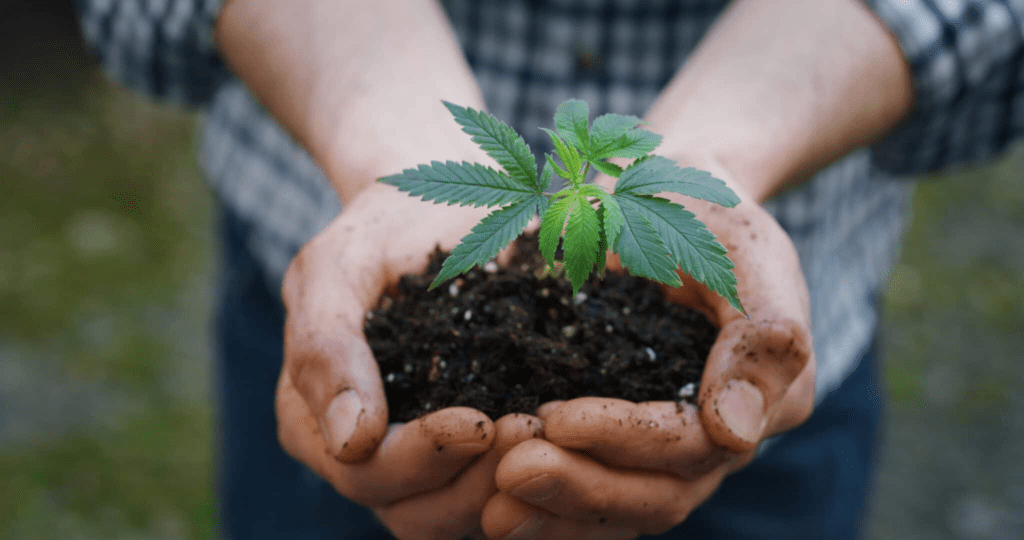
Soil Preparation: Essential Steps for Preparing the Soil for Hemp Farming
Preparing the soil is an essential step for successful hemp farming. The quality and nutrient content of the soil can greatly impact the growth and yield of hemp plants. Before planting, it is important to ensure that the soil is properly prepared to provide the necessary conditions for optimal growth.
The first step in soil preparation is to conduct a soil test. This will help determine the current nutrient levels and pH of the soil. Hemp plants thrive in slightly acidic soil with a pH range between 6 and 7. A soil test will also reveal any deficiencies or imbalances in essential nutrients such as nitrogen, phosphorus, and potassium. Based on the results, appropriate fertilizers or soil amendments can be added to ensure the soil is rich in the necessary nutrients for hemp cultivation. Additionally, it is important to address any compacted soil or drainage issues that may hinder plant growth. This can be achieved through techniques such as tilling, aeration, or the addition of organic matter to improve soil structure and porosity. By taking these essential steps, farmers can create an optimal growing environment for their hemp plants.
Seed Selection: Tips for Choosing High-Quality Hemp Seeds for Cultivation
When it comes to cultivating hemp, a crucial step in the process is selecting high-quality seeds. The quality of your hemp seeds will significantly impact the yield, potency, and overall success of your cultivation efforts. To ensure you choose the best seeds for your hemp farm, here are some essential tips to consider.
First and foremost, it’s important to source your seeds from reputable and reliable suppliers. Look for seed banks or companies with a proven track record in the industry and positive customer reviews. By purchasing from trusted sources, you can be more confident in the genetic integrity and quality of the seeds.
Additionally, consider the desired end product you aim to achieve. Whether you’re growing hemp for fiber, CBD extraction, or grain production, there are different seed varieties available to suit specific purposes. Understanding the specific characteristics and traits of different hemp strains will enable you to select seeds that align with your intended use.
Furthermore, look for feminized seeds, as they guarantee a higher percentage of female plants. Female hemp plants are the ones that produce the valuable flowers and buds used for CBD extraction or other purposes. By using feminized seeds, you can maximize your harvest and avoid the hassle of removing male plants.
Lastly, always check for the seed’s germination rate and viability. Opt for seeds with a high germination rate to increase your chances of successful cultivation. Reputable seed suppliers will provide information on germination rates, allowing you to make informed decisions for your hemp farm.
By following these tips and selecting high-quality hemp seeds, you’ll be setting a strong foundation for a successful cultivation journey. Remember, investing time and effort into seed selection is a vital step in harnessing the full potential of your hemp farm.
• Source your seeds from reputable and reliable suppliers with a proven track record in the industry and positive customer reviews.
• Consider the desired end product you aim to achieve, whether it’s fiber, CBD extraction, or grain production.
• Understand the specific characteristics and traits of different hemp strains to select seeds that align with your intended use.
• Look for feminized seeds to guarantee a higher percentage of female plants for valuable flower and bud production.
• Check for the seed’s germination rate and viability, opting for seeds with a high germination rate for successful cultivation.
Planting Techniques: Best Practices for Planting Hemp Seeds and Transplants
Planting hemp seeds and transplants is a crucial step in successfully growing hemp. To ensure optimal growth and yield, it is important to follow best practices for planting techniques. First and foremost, it is essential to select high-quality hemp seeds or healthy transplants from a reputable source. This ensures that you are starting with strong and genetically stable plants.
Before planting, prepare the soil by removing any weeds, rocks, or debris. Hemp plants thrive in well-drained, fertile soil that is rich in organic matter. Additionally, it is beneficial to conduct a soil test to determine the pH level and nutrient composition of the soil. Based on the test results, you can make necessary amendments to optimize the soil conditions for hemp cultivation.
When planting hemp seeds, it is advisable to plant them at a depth of 0.5 to 1 inch. If transplanting, ensure that each plant is placed at least 6 inches apart to provide adequate space for growth and airflow. Proper spacing allows the plants to develop full, bushy canopies and minimizes the risk of disease and pest infestations. Additionally, consider using raised beds or planting in rows for easier maintenance and harvesting.
To promote healthy root development and reduce transplant shock, water the newly planted seeds or transplants thoroughly. This encourages the roots to establish themselves in the soil and reduces stress on the plants. After planting, monitor the soil moisture regularly and adjust irrigation accordingly to ensure optimal hydration for the growing hemp plants.
By following these best practices for planting hemp seeds and transplants, you can set a strong foundation for successful hemp cultivation. The initial care and attention you invest in the planting process will greatly contribute to the overall health and productivity of your hemp crop.
Irrigation and Water Management: Ensuring Proper Watering for Optimal Hemp Growth
Proper irrigation and water management are essential for the optimal growth of hemp plants. As a crop that requires a substantial amount of water, it is crucial to ensure that the plants receive sufficient moisture without overwatering. The goal is to strike a balance that promotes healthy growth and maximizes yield.
One key aspect of water management is understanding the water requirements of hemp plants at various stages of growth. During the germination and early seedling stages, hemp plants are particularly sensitive to waterlogged conditions, which can lead to root rot. Therefore, it is important to provide well-drained soil and avoid excessive watering during this phase. Once the plants reach the vegetative and flowering stages, they require more water to support growth and development. Regular monitoring of soil moisture levels can help determine the optimal frequency and duration of irrigation, preventing both under- and overwatering. Additionally, utilizing drip irrigation systems or soaker hoses can ensure that water is delivered directly to the root zone, minimizing waste and promoting efficient water utilization.

To further enhance water management, farmers can employ mulching techniques to conserve moisture and reduce evaporation. Organic mulches, such as straw or wood chips, can be spread around the base of hemp plants to create a protective layer that helps retain moisture in the soil. This not only reduces the water requirements but also helps control weed growth, saving both water and labor. Additionally, implementing rainwater harvesting systems or utilizing sustainable water sources, such as recycled wastewater, can contribute to responsible water management practices and reduce reliance on traditional water supplies.
Efficiently managing irrigation and water resources is crucial for the successful cultivation of hemp. By understanding the water needs of the plants and implementing proper techniques and technologies, farmers can ensure optimal growth, maximize yields, and contribute to sustainable agricultural practices.
Weed Control Strategies: Effective Methods for Managing Weeds in a Hemp Farm
Effective weed control strategies are crucial for maintaining the health and productivity of a hemp farm. Weeds compete with hemp plants for essential resources such as sunlight, water, and nutrients, and if left unchecked, they can significantly reduce crop yields. Fortunately, there are several methods that farmers can employ to effectively manage weeds in a hemp farm.
One of the most common and effective strategies for weed control in a hemp farm is mechanical cultivation. This involves the use of various tools and equipment to physically remove weeds from the soil. Mechanical cultivation can include practices such as hand-weeding, hoeing, and tractor-mounted cultivators. The key to successful mechanical cultivation is to remove weeds while they are still small and before they have a chance to flower and reproduce. By regularly cultivating the soil, farmers can keep weed populations in check and prevent them from outcompeting the hemp plants.
Pest and Disease Management: Identifying and Treating Common Hemp Pests and Diseases
Identifying and treating common pests and diseases is crucial for the successful cultivation of hemp plants. Just like any other crop, hemp is susceptible to a range of pests and diseases that can significantly impact its growth and yield. By being proactive and implementing effective management strategies, farmers can minimize the damage caused by these threats and ensure the health and vigor of their hemp crops.
One of the common pests that can target hemp plants is aphids. These small insects feed on the sap of the plants, causing stunted growth, curled leaves, and the presence of sticky residue known as honeydew. To control aphids, farmers can introduce natural predators like ladybugs and lacewings into their hemp fields. Alternatively, they can use organic insecticides that specifically target aphids while minimizing harm to beneficial insects and the environment.
Another pest that hemp farmers need to watch out for is spider mites. These tiny creatures can quickly multiply and infest the plants, leading to yellowing leaves, webbing, and reduced vigor. To combat spider mites, regular monitoring of the plants is essential. If an infestation is detected, introducing predatory mites or using approved miticides can be effective control measures.
| Pest/Disease | Identification | Treatment |
|---|---|---|
| Aphids | Small, soft-bodied insects, often green or black. Clusters on the undersides of leaves. | Insecticidal soaps, neem oil, beneficial insects (ladybugs). |
| Spider Mites | Tiny, red or brown pests causing stippling on leaves. Fine webbing may be visible. | Spraying with water, neem oil, insecticidal soaps. |
| Whiteflies | Small, white, moth-like insects found on the undersides of leaves. Suck sap from plants. | Insecticidal soaps, neem oil, yellow sticky traps. |
| Fungal Diseases | Symptoms include wilting, discoloration, and lesions on leaves. Common fungi: powdery mildew, damping-off. | Fungicides (copper-based for organic farming), proper ventilation, spacing plants for airflow. |
| Bacterial Blight | Water-soaked lesions on leaves, wilting, and yellowing. Bacteria are spread by water and insects. | Copper-based bactericides, proper sanitation, resistant varieties. |
| Root Rot | Wilting, yellowing, and stunted growth. Roots may appear dark and mushy. | Improve soil drainage, avoid overwatering, treat with fungicides. |
| Hemp Russet Mites | Fine yellow stippling on leaves, bronzing of foliage, decreased plant vigor. | Miticides, neem oil, predatory mites. |
| Leafhoppers | Small, wedge-shaped insects that hop when disturbed. Cause stippling and yellowing of leaves. | Insecticidal soaps, neem oil, biological control (predatory insects). |
| Cucumber Beetles | Yellowish-green beetles with black stripes. Feed on leaves, transmit bacterial wilt. | Insecticidal soaps, neem oil, row covers, trap crops. |
When it comes to diseases, hemp plants can be susceptible to fungal infections such as powdery mildew. This disease manifests as a white powdery coating on the leaves, stems, and buds. To manage powdery mildew, farmers should ensure proper airflow and ventilation in their fields, as the disease thrives in humid conditions. Additionally, using organic fungicides and removing any infected plant material can help prevent its spread.
For a successful hemp cultivation venture, it is paramount to prioritize pest and disease management. By staying vigilant, implementing preventive measures, and taking swift action when needed, farmers can safeguard their hemp plants and optimize their yields.
Nutrient Management: Understanding the Nutritional Needs of Hemp Plants
Hemp plants, like any other crop, require specific nutrients to grow and thrive. Understanding the nutritional needs of hemp plants is crucial for successful cultivation and maximizing yields. Hemp has a unique nutrient profile, requiring a balanced supply of macronutrients such as nitrogen (N), phosphorus (P), and potassium (K), as well as essential micronutrients like iron (Fe), manganese (Mn), and zinc (Zn).
One of the key considerations in nutrient management for hemp is achieving the optimal ratio of nutrients, particularly nitrogen to phosphorus. Research has shown that hemp plants have a high demand for nitrogen during the early vegetative growth stage, which helps promote vigorous leaf and stem development. However, excessive nitrogen levels can result in delayed flowering and lower cannabinoid production. On the other hand, phosphorus is crucial during the flowering stage as it plays a vital role in flower and seed development. Striking the right balance between these two nutrients is essential for achieving optimal growth and yield.
| Nutrient | Function | Deficiency Symptoms | Excess Symptoms |
|---|---|---|---|
| Nitrogen | Essential for leaf and stem growth, protein synthesis | Yellowing of lower leaves, stunted growth | Dark green leaves, delayed flowering |
| Phosphorus | Important for root development, flower and seed production | Purple discoloration of leaves, poor root growth | Stunted growth, nutrient imbalances |
| Potassium | Aids in overall plant health, water uptake, and photosynthesis | Yellowing of leaf edges, weak stems | Reduced flowering, susceptibility to diseases |
| Calcium | Supports cell wall structure, nutrient uptake | Leaf tip burn, stunted root development | Interference with magnesium uptake, nutrient imbalances |
| Magnesium | Essential for chlorophyll production, enzyme activation | Yellowing between leaf veins, leaf curling | Interference with calcium uptake, nutrient imbalances |
| Sulfur | Necessary for protein synthesis, enzyme function | Yellowing of new leaves, stunted growth | Reduced growth, nutrient imbalances |
| Iron | Essential for chlorophyll formation and electron transport | Yellowing between veins, poor growth | Leaf bronzing, toxicity symptoms |
| Manganese | Involved in enzyme activation, photosynthesis | Yellowing between veins, leaf distortion | Reduced growth, nutrient imbalances |
| Zinc | Essential for enzyme function, hormone regulation | Yellowing between veins, stunted growth | Reduced root development, toxicity symptoms |
In addition to macronutrients, hemp plants also require a range of micronutrients to support their overall health and development. These micronutrients are involved in various physiological processes, such as enzyme activation, photosynthesis, and hormone synthesis. Soil tests can help identify any nutrient deficiencies or imbalances, enabling growers to make informed decisions about fertilizer applications. By providing hemp plants with the necessary nutrients in the right proportions, farmers can ensure healthy growth, improved resistance to pests and diseases, and ultimately, higher-quality yields.
Harvesting and Processing: Techniques for Harvesting and Drying Hemp Plants
Harvesting and processing hemp plants require careful techniques to ensure optimal quality and maximize the plant’s potential. When it comes to harvesting hemp, timing is crucial. The ideal time to harvest hemp plants is when the CBD levels are at their peak and the THC levels are below the legal limit. While there is no exact timeframe for harvesting, it is generally recommended to harvest hemp plants when the flowers are fully developed, and the trichomes are milky white in color. Harvesting too early or too late can result in subpar CBD levels or violations of legal THC limits, respectively.
Once the hemp plants are harvested, the drying process becomes crucial to preserve the quality and prevent any mold or mildew formation. Proper air circulation and temperature control are key factors in drying hemp plants. Hanging the plants upside down in a cool, dark, and well-ventilated area is a commonly used method. By allowing the plants to dry slowly, the cannabinoids and terpenes can fully develop, resulting in a better end product. It is essential to regularly monitor the drying process to ensure that the plants are not overdried, which can lead to a loss of potency. Investing in quality drying equipment, such as dehumidifiers or fans, can also aid in the drying process and maintain a consistent humidity level.
Marketing and Selling Hemp Products: Strategies for Selling Hemp and CBD Products
Marketing and selling hemp products, especially CBD products, requires a strategic approach to reach the targeted consumers and establish a strong presence in the market. With the growing popularity of hemp and CBD, it is essential to employ effective strategies to stand out from the competition and ensure a successful business venture.
One of the key strategies for selling hemp and CBD products is to educate consumers about the benefits and uses of these products. Many people are still unfamiliar with the potential therapeutic properties of CBD and may have misconceptions about hemp products. By providing accurate and reliable information, backed by scientific studies and research, you can help consumers make informed decisions and build trust in your brand.
Another important aspect of marketing hemp products is to identify and target your specific audience. Understanding the demographics, preferences, and needs of your target market will allow you to create targeted advertising campaigns and tailor your messaging to resonate with those consumers. Whether your target audience includes health-conscious individuals, athletes, or those seeking natural remedies, developing a clear and compelling brand story will help you connect with consumers on a deeper level.
In summary, marketing and selling hemp products require a combination of education, targeted marketing, and a compelling brand story. By providing accurate information, identifying your target audience, and crafting a strong brand message, you can effectively promote your hemp products and establish a successful business in this growing industry.
Scaling Up: Expanding Your Hemp Farm and Maximizing Productivity
Expanding your hemp farm and maximizing productivity is a crucial step in scaling up your operation and capitalizing on the growing demand for hemp products. With the right strategies and careful planning, you can increase both the quantity and quality of your hemp yield.
One of the first considerations when expanding your hemp farm is assessing the available resources, including land availability and access to water sources. A larger farm will require more land, and it’s important to ensure that the soil conditions are suitable for hemp cultivation. Conducting soil tests to determine nutrient levels and pH balance can help you make informed decisions about soil amendments and fertilization. Additionally, having a reliable and efficient irrigation system in place is essential to manage water requirements and ensure optimal growth. Considering these factors will give you a solid foundation for scaling up your hemp farm and enhancing productivity.
How can I determine if my location is suitable for hemp farming?
Factors such as climate, soil type, and proximity to water sources should be considered when selecting a location for hemp farming. Conducting soil tests and researching local regulations can help determine if your location is suitable.
What permits or regulations do I need to comply with for hemp cultivation?
The specific permits and regulations for hemp cultivation vary by country and state. It is essential to research and comply with all applicable laws, including obtaining the necessary licenses and permits for hemp farming.
How do I prepare the soil for hemp farming?
Soil preparation for hemp farming involves steps such as clearing the land, tilling the soil, and removing any weeds or debris. Additionally, adding organic matter and conducting soil tests to ensure the optimal pH and nutrient levels are important.
How do I choose high-quality hemp seeds for cultivation?
When selecting hemp seeds, look for reputable suppliers and ensure that the seeds are certified and meet the desired cannabinoid profile. Consider factors such as feminized seeds, seed viability, and the desired end product.
What are the best practices for planting hemp seeds and transplants?
Planting hemp seeds and transplants should be done during the appropriate planting window for your region. Proper seed spacing, planting depth, and soil moisture management are crucial for successful hemp cultivation.
How can I effectively manage weeds in my hemp farm?
Weed control in hemp farming can be achieved through various methods such as mechanical cultivation, mulching, cover cropping, and targeted herbicide use. Implementing a combination of these strategies can help manage weeds effectively.
What are common pests and diseases that affect hemp plants, and how can they be treated?
Common hemp pests include aphids, caterpillars, and mites, while diseases like powdery mildew and root rot can also occur. Regular scouting, implementing integrated pest management practices, and using appropriate treatments can help manage these issues.
What are the nutritional needs of hemp plants?
Hemp plants require proper nutrient management, including the right balance of nitrogen, phosphorus, and potassium. Conducting soil tests and using organic fertilizers can help meet the nutritional needs of hemp plants.
How do I harvest and dry hemp plants?
Harvesting hemp plants should be done when the desired cannabinoid levels are reached. Carefully cutting and drying the plants in a well-ventilated area while monitoring humidity levels can ensure proper drying for further processing.
What are some effective strategies for marketing and selling hemp products?
Developing a strong brand, creating an online presence, and networking with potential buyers are important strategies for marketing and selling hemp products. Understanding the target market and complying with labeling and advertising regulations are also crucial.
How can I expand my hemp farm and increase productivity?
Scaling up a hemp farm involves careful planning, investment in infrastructure and equipment, and potentially hiring additional labor. Conducting market research, implementing efficient cultivation practices, and optimizing resource management can help maximize productivity.

Pallavi Gupta is a burgeoning writer at SouthElMonteHydroponics, blending her passion for data analysis with a keen interest in biotechnology. Currently pursuing a Bachelor’s in Biotechnology at Amity University, Pallavi delves into the intricacies of life sciences while gaining hands-on experience in the exciting world of data analysis. Her unique background provides a fresh perspective on hydroponic farming, as she explores the intersection of biotechnology and sustainable agriculture. Through her writing, Pallavi aims to bridge the gap between data-driven insights and innovative farming practices, inspiring others to harness technology for a greener future.


